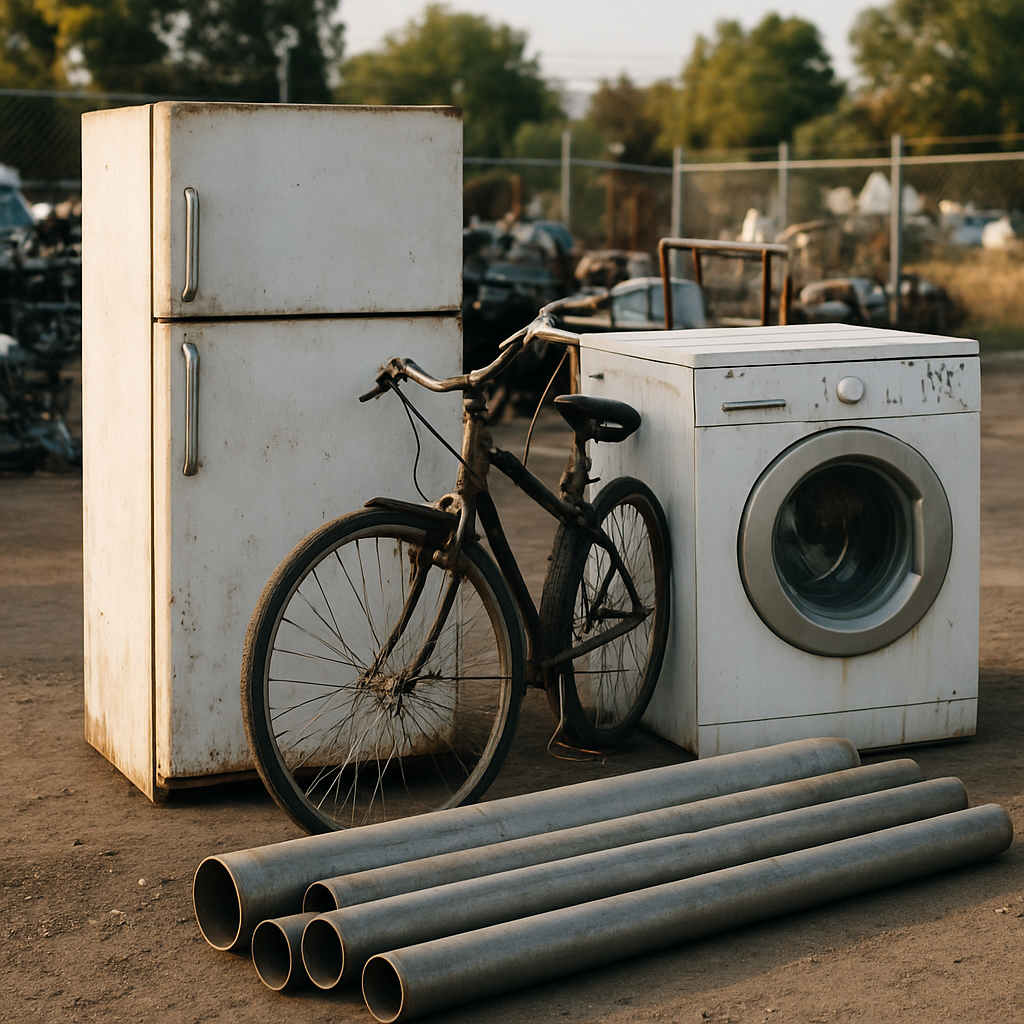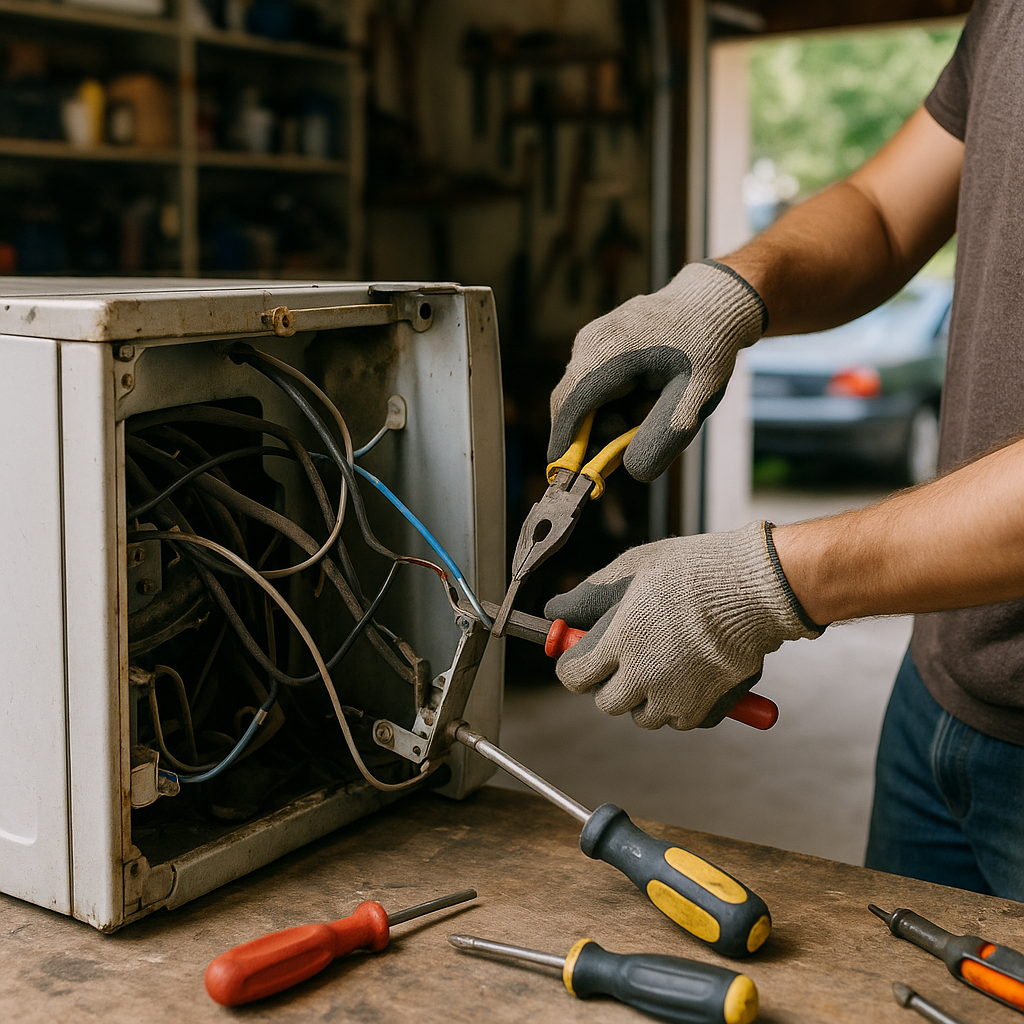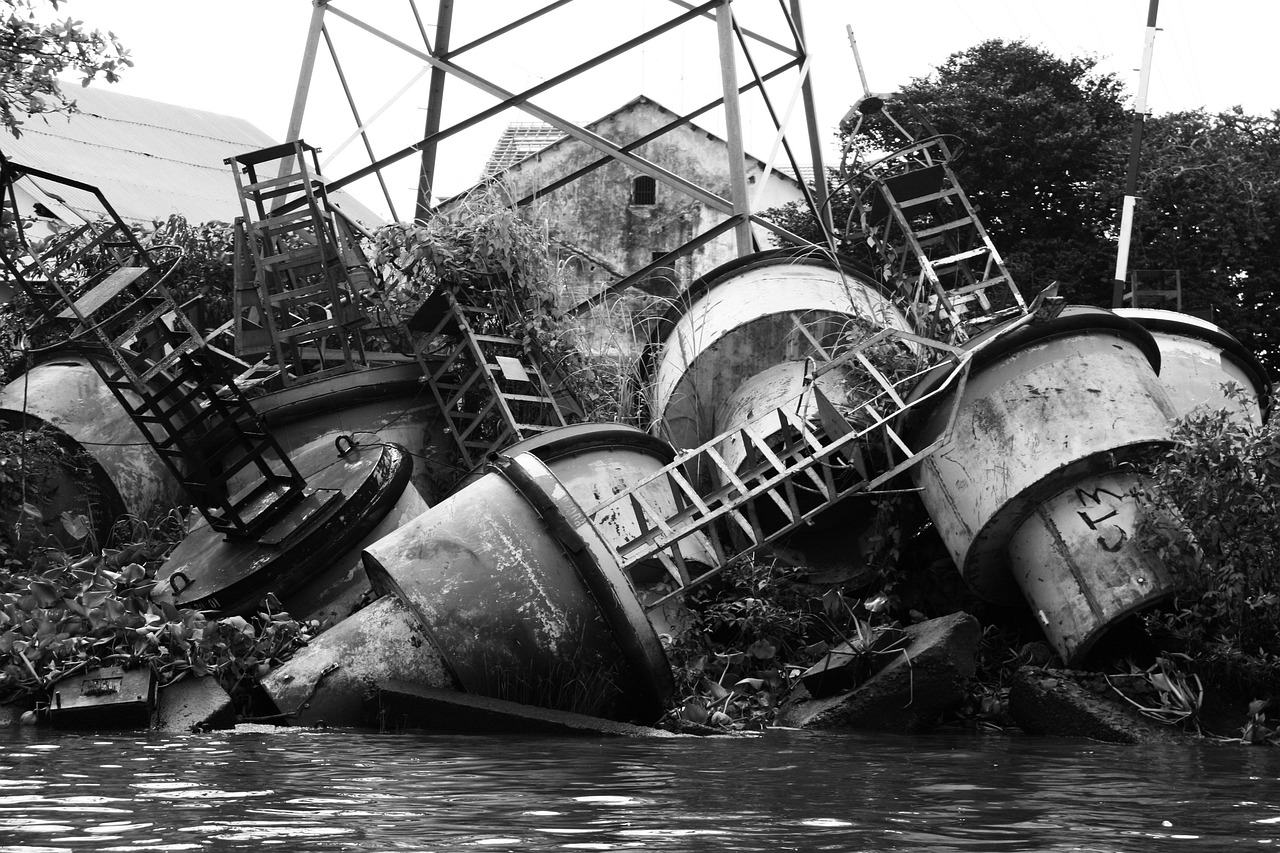5901 Botham Jean Blvd, Dallas, TX 75215
The Importance of Properly Disposing Large Metal Items
July 4, 2025Every year, the world generates over 2 billion tons of metal waste. That discarded refrigerator in your garage or the rusted swing set in your backyard contributes to this staggering figure. When large metal items end up in landfills, they don’t just take up valuable space; they represent squandered resources that could be reused and repurposed.
Improper disposal of metal waste has serious environmental consequences. Heavy metals can leach into soil and water, contaminating ecosystems and disrupting delicate ecological balances. Mining for virgin metals requires vast amounts of water and energy, while causing deforestation and habitat destruction. The good news? Recycling aluminum uses 95% less energy than producing it from raw bauxite ore.
This article will guide you through the responsible disposal of large metal items. From old appliances and furniture to automotive parts and construction debris, you’ll learn practical steps to ensure these bulky objects contribute to a circular economy rather than environmental degradation. Proper metal disposal isn’t just environmentally responsible—it’s increasingly accessible and sometimes even profitable.
What Types of Large Metal Items Can Be Recycled?

Large metal items provide excellent recycling opportunities as they contain valuable materials that can be recovered and reused. Both ferrous metals (containing iron) and non-ferrous metals (without iron) can be processed at recycling facilities, diverting substantial waste from landfills.
Ferrous Metals
Ferrous metals contain iron and are magnetic. These metals are common in large household and industrial items such as steel, cast iron, and wrought iron. The recycling process involves shredding, melting, and reforming these metals into new products.
Common recyclable ferrous metal items include steel shelving, bed frames, weight-lifting equipment, and most large appliances. These items typically have substantial recycling value due to their weight and metal content.
Non-Ferrous Metals
Non-ferrous metals do not contain iron and aren’t magnetic. These include aluminum, copper, brass, bronze, and lead. Non-ferrous metals often have a higher recycling value per pound than ferrous metals because of their scarcity and specialized applications.
Recyclable non-ferrous items include aluminum patio furniture, copper piping, brass fixtures, and components within electronics. Many scrap yards pay premium rates for clean, sorted non-ferrous metals.
Large Metal Items Commonly Accepted for Recycling
Most recycling facilities and scrap yards accept large metal items that are at least 50% metal. Items with mixed materials may require some disassembly or preparation before recycling.
- Appliances: Refrigerators, washing machines, dryers, dishwashers, stoves, and water heaters
- Automotive Parts: Engine blocks, transmissions, exhaust systems, catalytic converters, and metal bumpers
- Metal Furniture: Bed frames, metal tables, filing cabinets, shelving units, and metal chairs
- Outdoor Items: Metal fencing, gates, grills, lawnmowers, and metal playground equipment
- Construction Materials: Metal roofing, gutters, pipes, wiring, and HVAC components
For optimal recycling, remove non-metal components when possible. Clean metal items receive better processing and may command higher prices at scrap yards.
| Type of Item | Material Category | Example Items | Recyclability Notes |
|---|---|---|---|
| Appliances | Ferrous | Refrigerators, washing machines, stoves | Commonly recyclable due to high metal content |
| Automotive Parts | Ferrous | Engine blocks, transmissions | Recycling reduces metal waste |
| Metal Furniture | Ferrous | Bed frames, filing cabinets | High recycling value |
| Outdoor Items | Ferrous and Non-Ferrous | Metal fencing, grills | Sort by metal type |
| Construction Materials | Ferrous and Non-Ferrous | Metal roofing, pipes | Contributes to substantial waste diversion |
| Non-Ferrous Items | Non-Ferrous | Aluminum furniture, copper piping | Higher recycling value per pound |
Preparing Large Metal Items for Recycling
Proper preparation ensures your metal items are recycled efficiently. Start by removing any non-metal attachments like plastic, rubber, or glass components. For appliances containing refrigerants, these must be properly removed by certified professionals before recycling.
Many recycling centers prefer items to be somewhat disassembled. This makes transportation easier and allows for better sorting of different metal types. Some facilities may offer pickup services for particularly large or heavy items like appliances or automotive parts.
When recycling appliances, ensure they are empty and remove doors for safety reasons. This is especially important for refrigerators and freezers to prevent accidents involving children.
How to Prepare Large Metal Items for Disposal

Properly preparing large metal items before disposal is crucial for both safety and recycling efficiency. Taking this step ensures items can be effectively processed at recycling facilities and helps prevent environmental hazards.
Remove Non-Metal Components
Begin by disassembling large metal items to separate different materials. This step enhances the recycling potential and prevents contamination.
- Remove plastic handles, knobs, and decorative elements from appliances and furniture.
- Detach wooden components from metal frames on items like desks or shelving units.
- Take out glass panels from items such as oven doors or cabinet fronts.
- Disconnect electronic components, circuit boards, and wiring where possible.
Removing non-metal components helps recycling facilities process metals more efficiently, as they prefer metals that are free from these attachments.
Clean the Metal Items
Cleaning metal items is an important step that improves recycling quality and can increase the value of scrap metal.
- Use a wire brush to remove loose rust, dirt, and debris from metal surfaces.
- Wash items with soapy water to eliminate grease, oils, and other contaminants.
- For stubborn grime, consider using a degreaser on heavily soiled metal parts.
- Allow items to dry completely before taking them to recycling facilities.
Clean metals require less processing at recycling centers, leading to lower energy consumption and better quality recycled materials.
Handle Hazardous Materials Properly
Large appliances often contain hazardous components that need special handling and disposal methods.
- Refrigerators and air conditioners contain refrigerants that must be professionally removed to prevent atmospheric release.
- Older appliances may have mercury switches that require careful removal.
- Remove batteries from any battery-operated metal items before recycling.
- Empty and clean containers that held chemicals, paints, or oils.
Improper disposal of hazardous materials can lead to environmental contamination and health risks. Many recycling centers will not accept appliances with refrigerants intact.
Separate Ferrous from Non-Ferrous Metals
Identifying and separating different types of metals can streamline the recycling process and potentially increase the value of your scrap.
- Use a magnet to identify ferrous (iron-containing) metals—these will stick to the magnet.
- Common ferrous metals include steel and cast iron, often found in appliances and furniture frames.
- Non-ferrous metals like copper, aluminum, and brass won’t stick to a magnet and typically have higher recycling value.
- Sort metals into separate containers based on type when possible.
Sorting metals before recycling saves time at recycling facilities. Non-ferrous metals typically command higher prices at scrap yards due to their greater value.
| Large Metal Item Type | Preparation Requirements |
|---|---|
| Appliances | Remove refrigerants and non-metal components; clean for better recycling processing. |
| Automotive Parts | Disassemble to separate ferrous and non-ferrous metals; clean to remove any attached materials. |
| Metal Furniture | Detach any non-metal components like plastic and wood; clean metal parts. |
| Outdoor Items | Remove non-metal parts and clean metal surfaces to enhance recycling efficiency. |
| Construction Materials | Sort metals by type, particularly distinguishing between ferrous and non-ferrous metals. |
Secure Items for Transport
Once your metal items are prepared, ensure they are safely packed for transportation to prevent injuries or damage.
- Wrap sharp edges with heavy cloth or tape to prevent cuts during handling.
- Bundle similar items together using strong twine or straps.
- Use work gloves when handling prepared metal items to protect your hands.
- For very large items, consider further disassembly for easier transport.
Safe transport prevents accidents and injuries. Properly secured loads also comply with transportation regulations, helping you avoid potential fines when delivering items to recycling facilities.
Where Can You Dispose of Large Metal Items?

Scrap metal recycling facilities are primary destinations for large metal items. These specialized yards accept a wide range of materials, including steel, aluminum, copper, tin, and appliances. Many scrap yards also take junk cars and other substantial metal objects that would otherwise be difficult to dispose of.
Municipal recycling programs offer another convenient option for residents. Many cities provide bulky waste pick-up services designed for large items that don’t fit in regular waste bins. These services often operate on a schedule or by appointment and may be included in your regular waste management fees.
Professional Pick-Up Services
For businesses and individuals with substantial amounts of metal waste, specialized pick-up services are a practical solution. Companies like Cozzi Recycling in Chicago provide industrial and commercial metal recycling services, including routine or one-time scrap removal.
These services cater to various industries, including manufacturers, construction companies, electrical contractors, and retail operations. The convenience of having items collected from your location saves time and transportation costs.
Some recycling companies provide equipment needed for scrap metal removal. This is particularly helpful for construction sites or business locations with limited resources for handling heavy items.
Potential Financial Benefits
Recycling large metal items can actually be financially rewarding. Valuable metals like copper, aluminum, and brass often fetch competitive prices at scrap yards. Even items primarily made of steel may contain components worth separating for additional value.
Prices fluctuate based on market conditions and material quality. Some recycling facilities allow you to text or call ahead for current pricing information. This helps you determine if a trip to the facility is worthwhile for your items.
Before taking items to a recycling facility, consider separating different metals to maximize your return. Clean, sorted materials typically command higher prices than mixed loads.
Retailer and Manufacturer Programs
Some retailers and manufacturers offer take-back programs for appliances and other large metal items. These programs often provide free or low-cost disposal options, particularly for items like refrigerators, washing machines, and other major appliances.
Take-back programs sometimes include pickup services, making them especially convenient for those without suitable transportation. Check with the original manufacturer or retailer of your item to see if they participate in such programs.
For environmental compliance reasons, certain appliances require special handling due to components like refrigerants or electronic parts. Manufacturer programs are often equipped to manage these requirements properly.
Before choosing a disposal method, check local resources to understand your specific options. Many communities maintain websites listing approved disposal facilities and explaining any special requirements or restrictions. Remember that proper disposal not only benefits the environment but can also provide financial returns through scrap metal recycling.
Conclusion: Responsible Disposal for a Greener Future

Properly disposing of large metal items offers a significant opportunity to conserve natural resources and protect our environment. Recycling metal reduces the need for energy-intensive mining operations, lowers greenhouse gas emissions, and prevents valuable materials from occupying landfill space. By choosing responsible disposal methods for bulky metal waste, you not only help conserve resources but might also receive financial compensation for certain types of scrap metal.
Informed choices about metal disposal contribute directly to a more sustainable future and support the circular economy. For expert assistance with your large metal disposal needs, contact Okon Recycling at 214-717-4083. Our team ensures your metal waste is handled properly, maximizing both environmental benefits and resource recovery.
